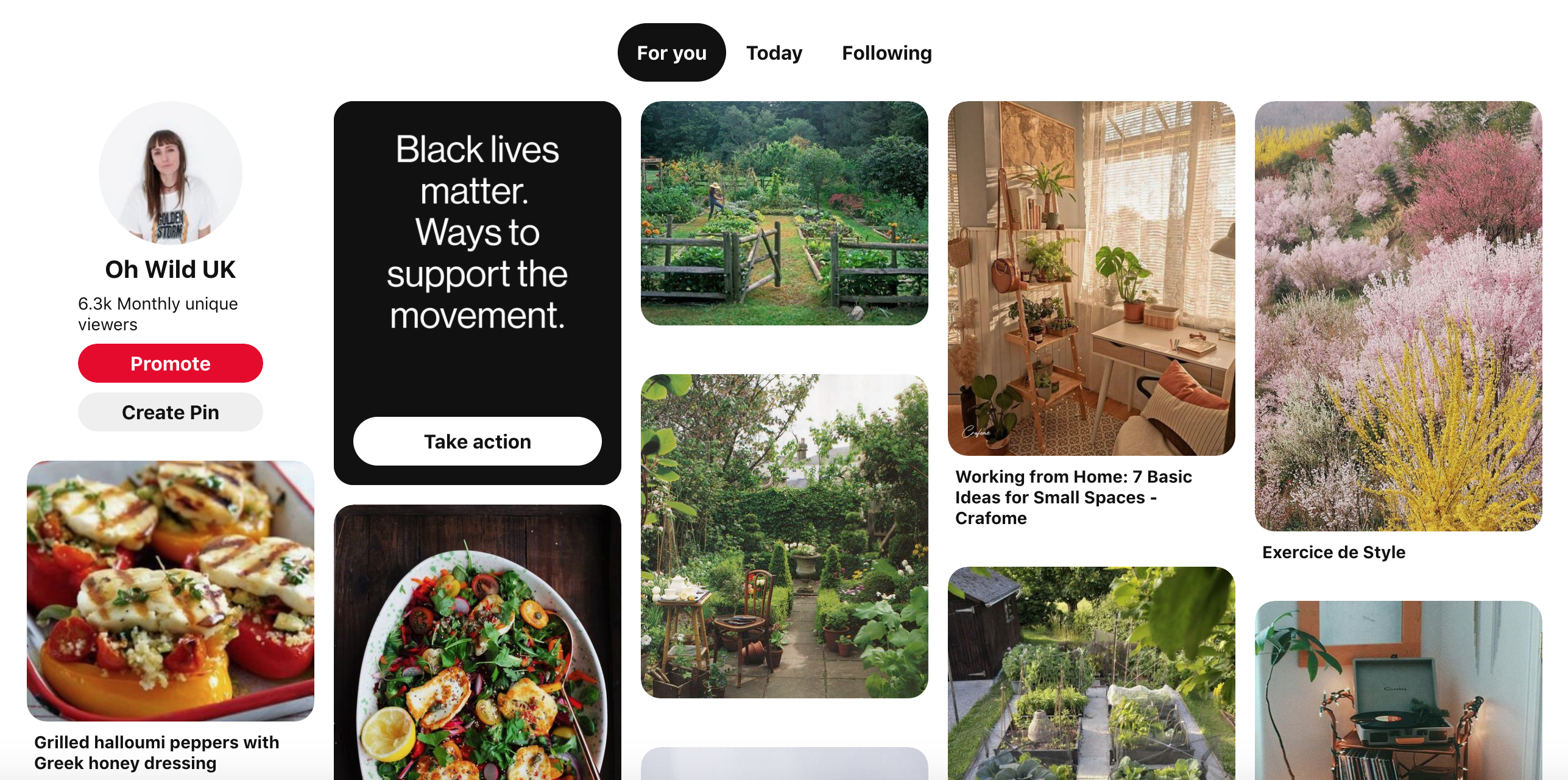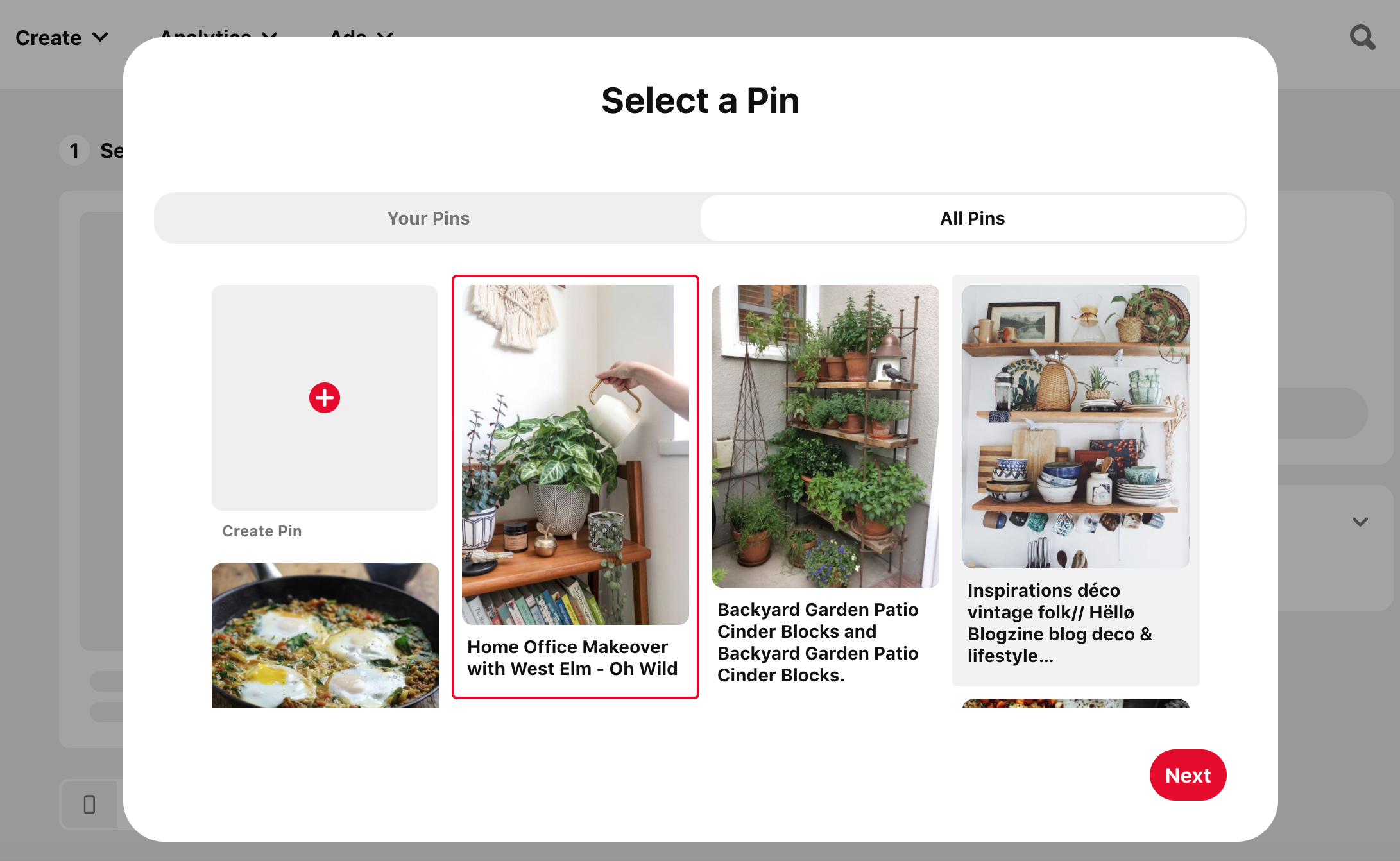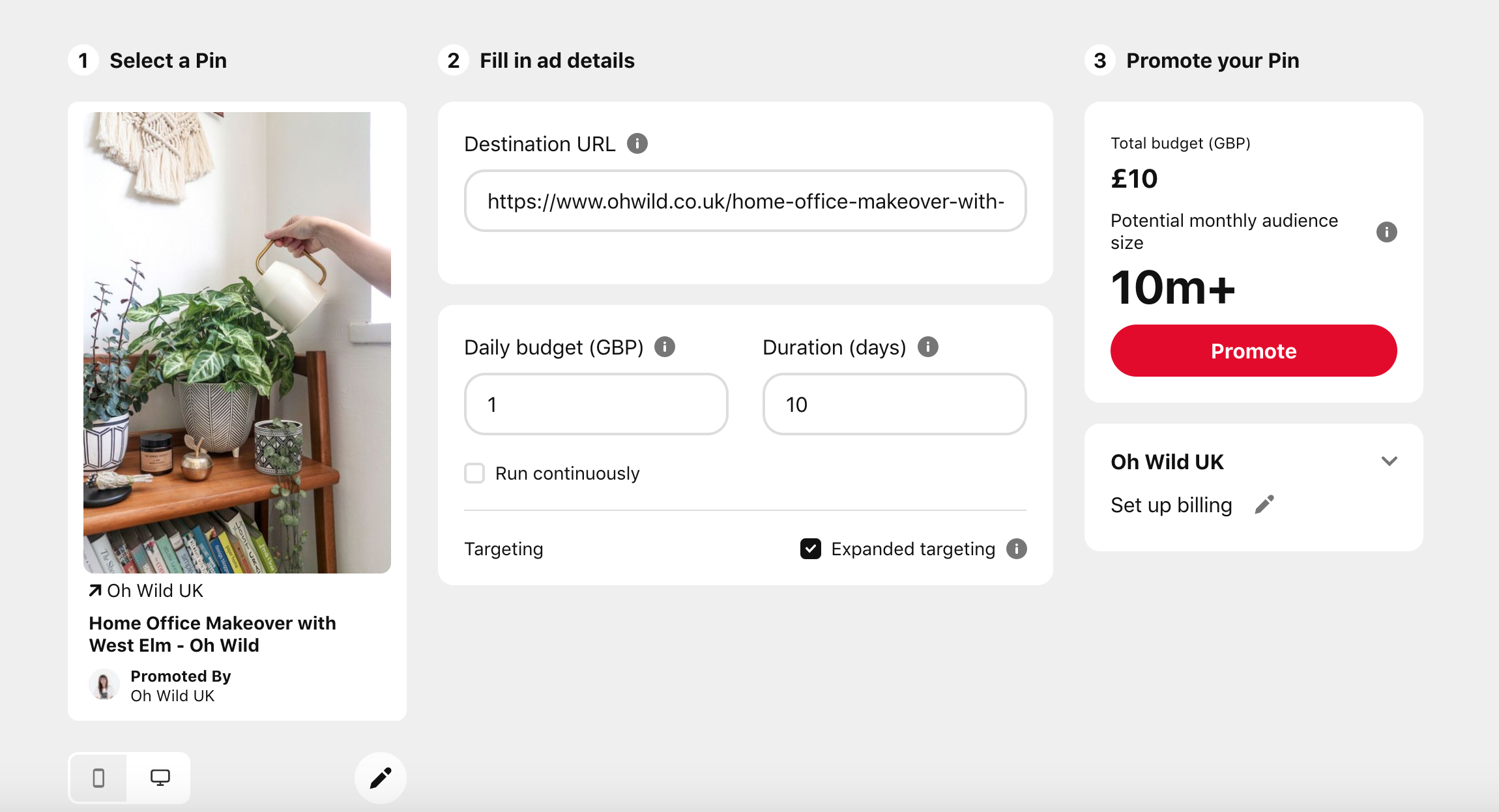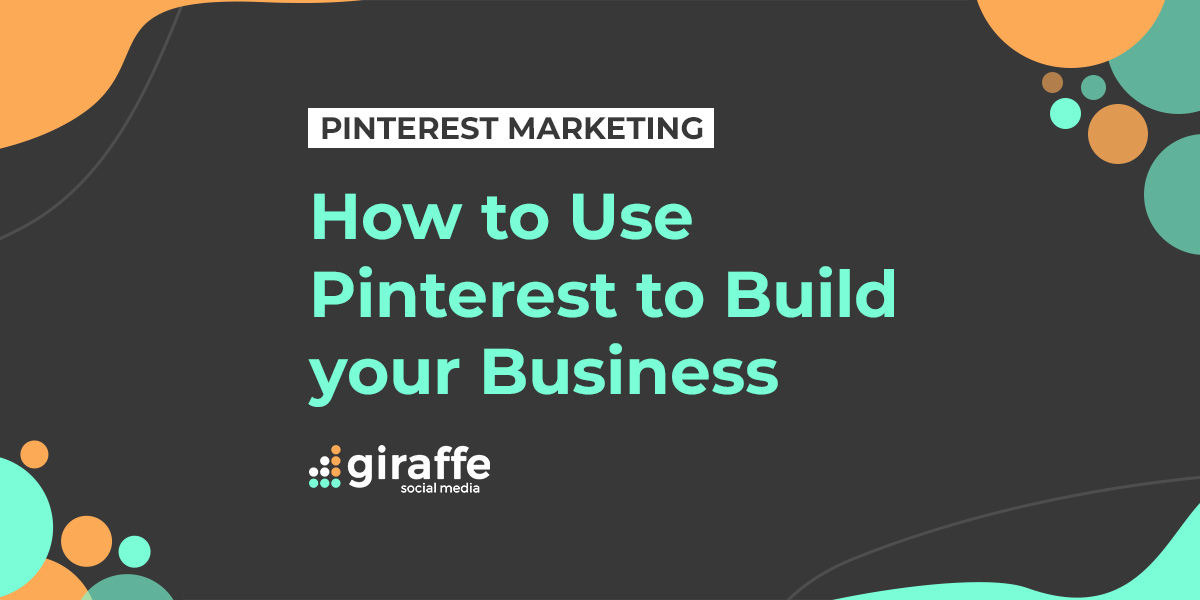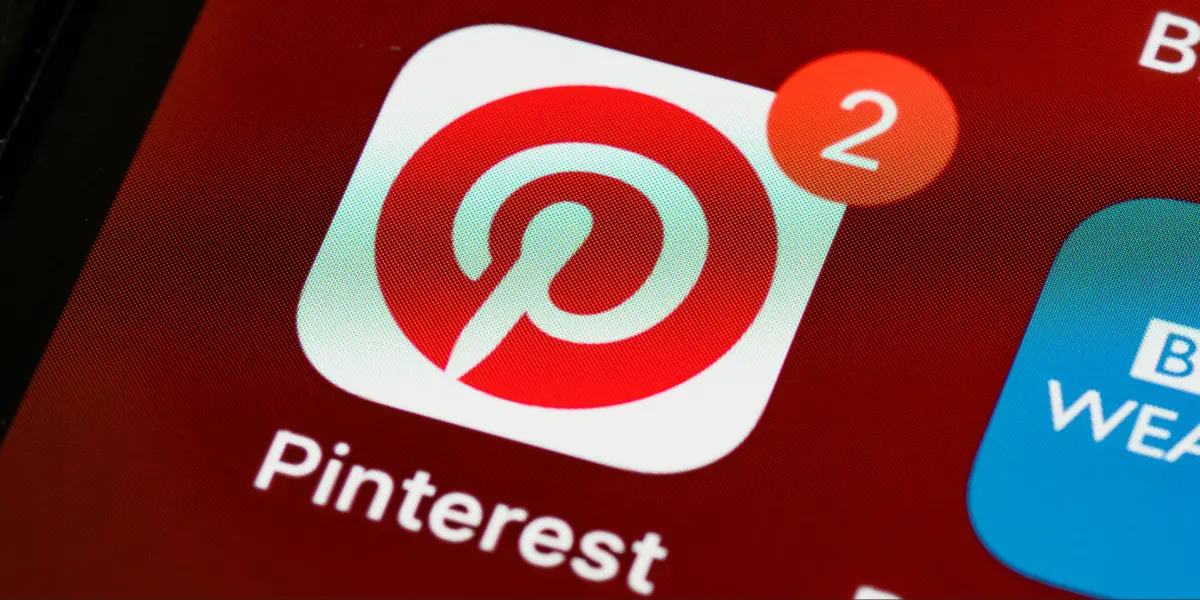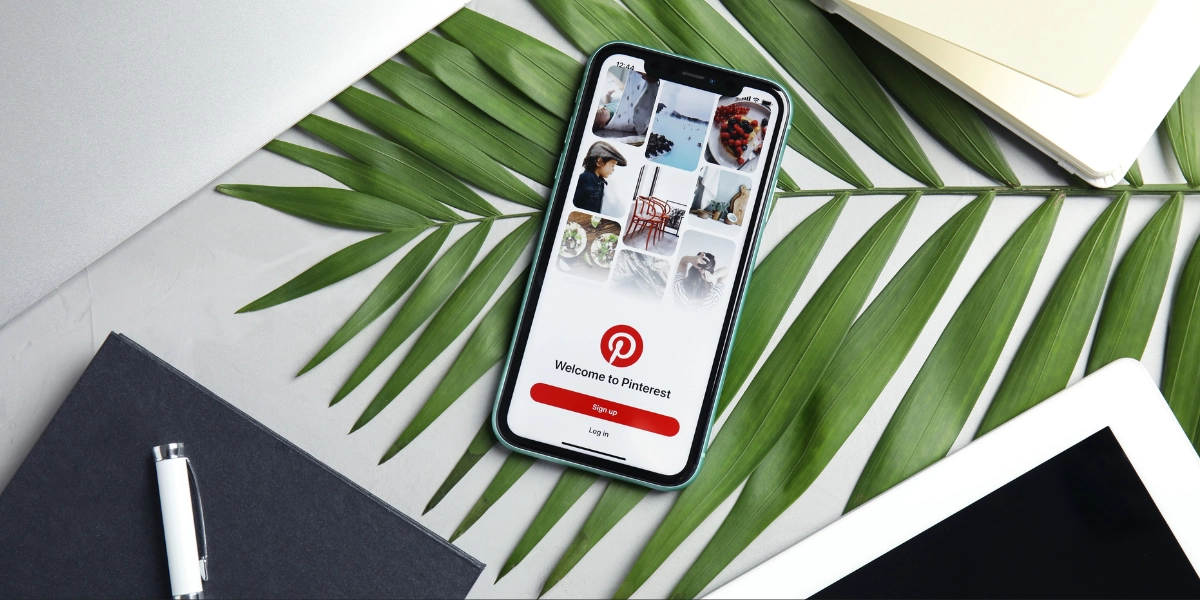Pinterest is a social media site with a difference. A cross between a giant visual search engine and a digital pinboard, it has the power to take your company to the next level. But why, and how, should you use Pinterest to build your business?
Pinterest is a smart combination of social networking and image bookmarking. Users upload ‘pins’, or save images from around the web to their boards, which other users can then like, comment on and re-save for themselves. It’s a huge platform; there are more than 200 billion pins, and during 2019 Pinterest became the third largest social networking site after Facebook and Instagram. With 335 million monthly active users, can you really afford not to be promoting your business on Pinterest?
Create a Great Business Pinterest Profile
The first step to using Pinterest to build your business is to create a great profile. Head to the Pinterest homepage, then click ‘sign up’ and select ‘create a business account’. Follow the on-screen prompts to add your information to the boxes, and then start setting up your profile page and building boards.
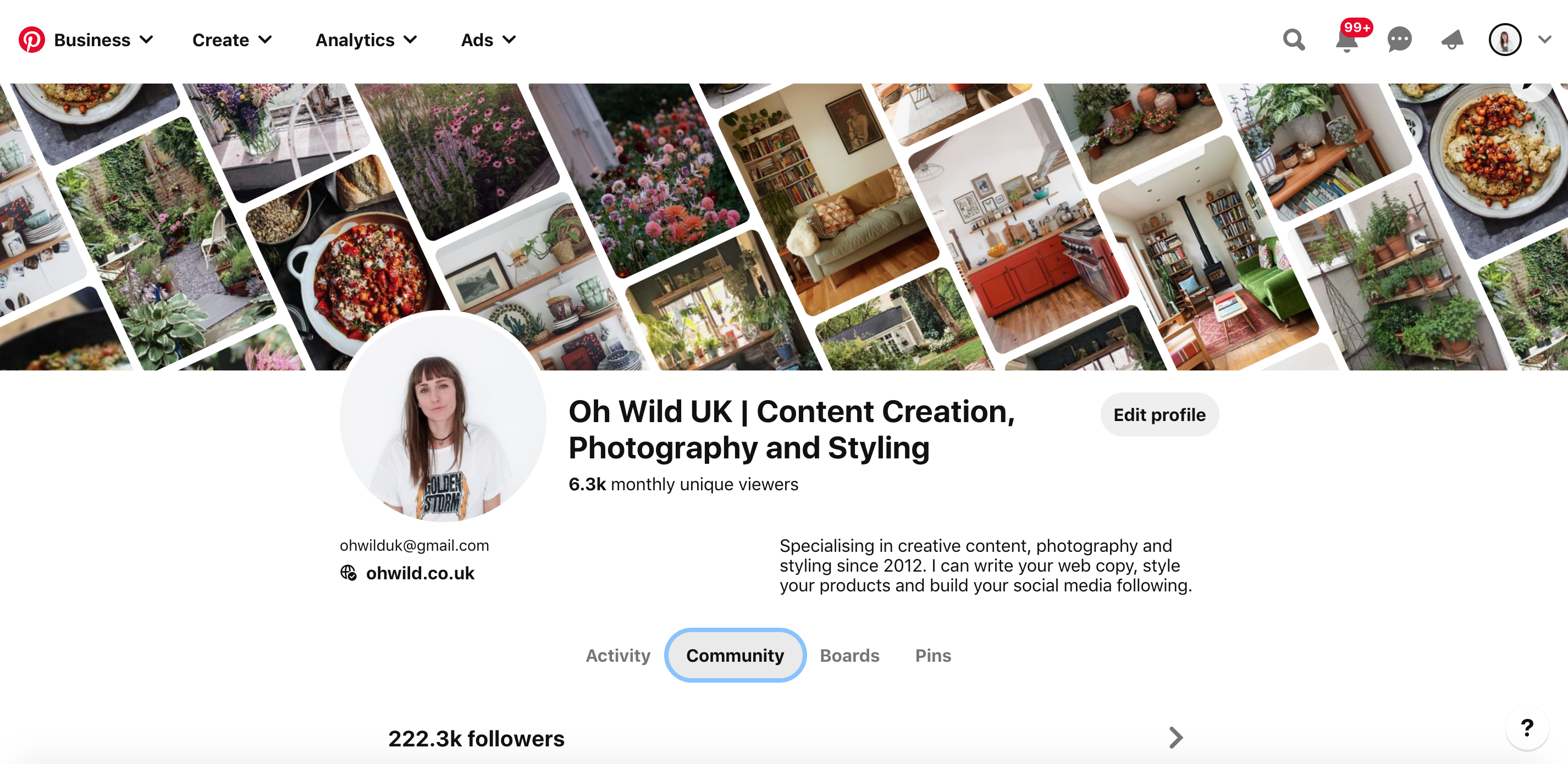
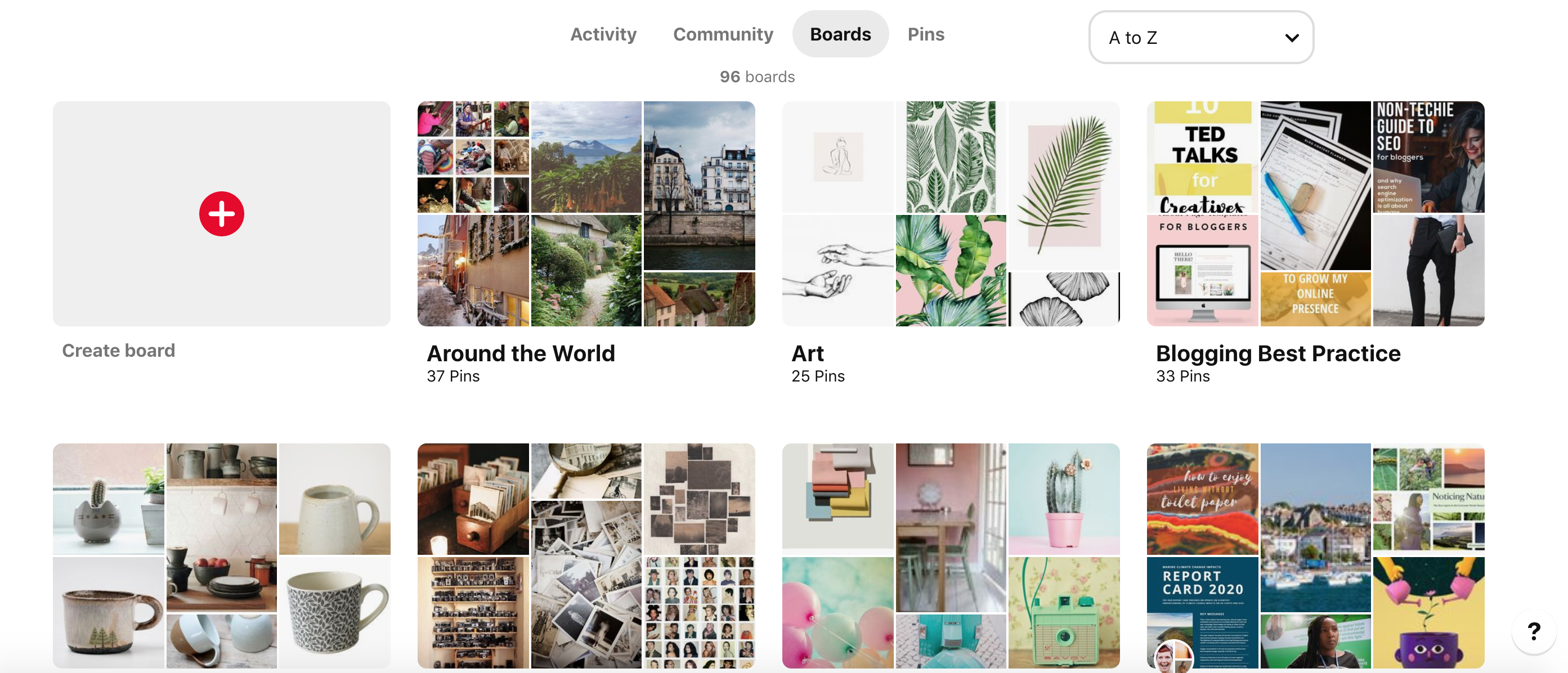
There are several key things to remember:
- Keep your branding consistent with your other social media platforms. Use the same logo or image for your profile picture, and stick to the colour scheme that your audience is used to. This will make you instantly recognizable to your followers.
- When filling out your name, adding a vertical bar followed by a description is a great way to optimize your profile. It’ll give you the opportunity to add some all-important keywords to your name, and make your profile more searchable.
- Include a few keywords in the first sentence of your bio, but don’t overdo it.
- Adding a location is particularly beneficial if you’ve got a bricks-and-mortar store.
- Claim your website. Click ‘claim’ on the left hand menu and enter your business URL. Follow the instructions to add a line of code to your website, and then wait for the email verification. Doing this allows you to add a clickable URL to your bio, which will take visitors directly to your website or shop. It also means all pins saved from your website automatically have your profile picture and details added to it, and that you can see how well pins from your site are doing.
- You can also connect your Instagram, Youtube and Etsy accounts. Claiming your Instagram account will mean that any time you or someone else saves an image from your profile, Pinterest will automatically apply a profile picture and ‘follow’ button to the top of the pin. This acts as a great traffic booster to both your Pinterest page and Instagram account – win-win!
Make your Website Pin-Friendly
Using Pinterest to build your business doesn’t happen on the site itself – you also need to think about your own website. Installing the ‘save’ button within your sites code will allow visitors to save your content directly to their Pinterest boards. This is great for boosting page impressions and increasing web traffic.
There are two types of ‘save’ button; Any Image and Image Hover. With Image Hover, when the user hovers their cursor over an image on your site, the clickable save button will appear. In contrast, Any Image allows visitors to click the button and then choose from a selection of pictures taken from the webpage. You can even customise the button with the widget builder, so it fits in with your branding.
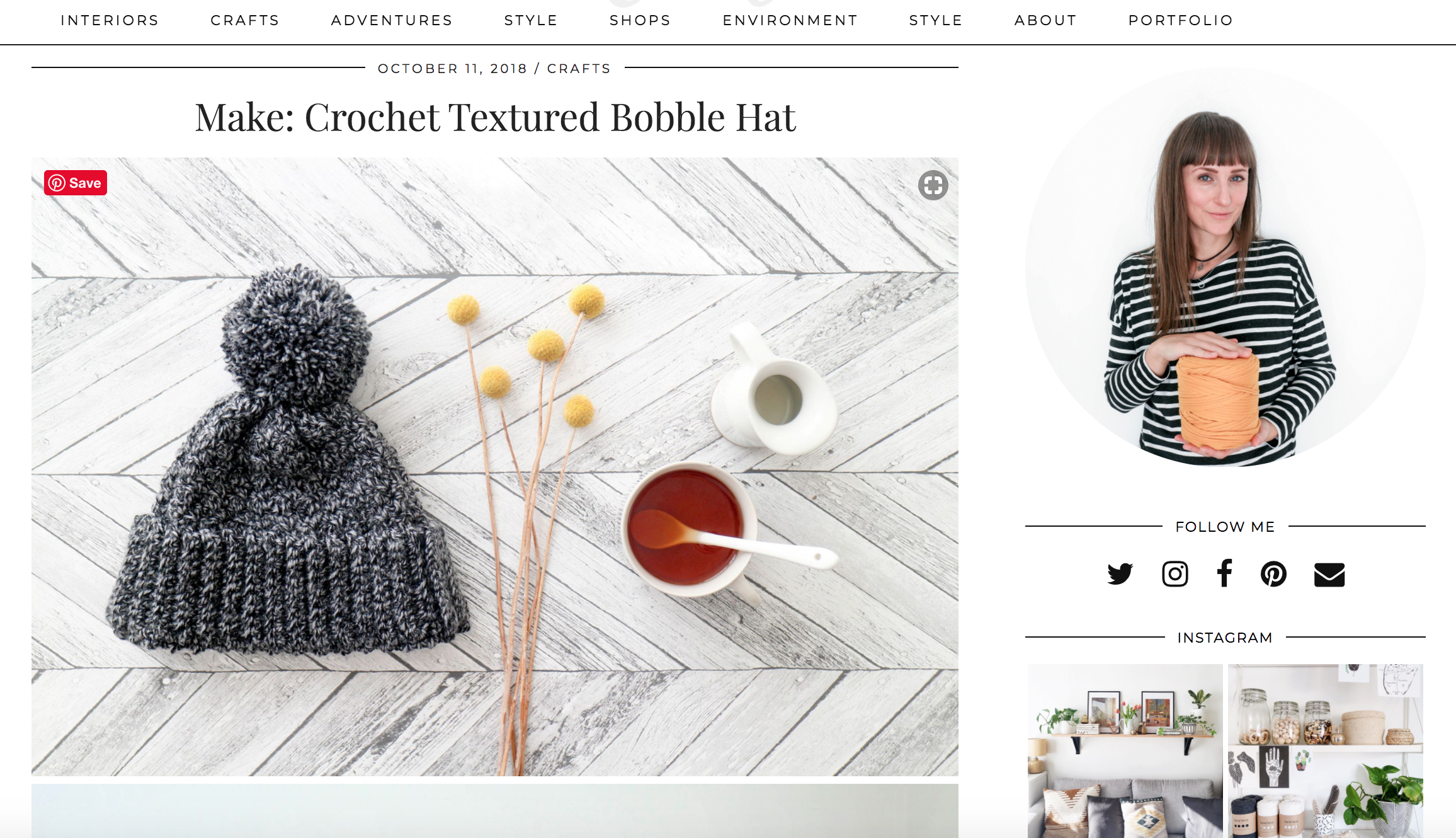
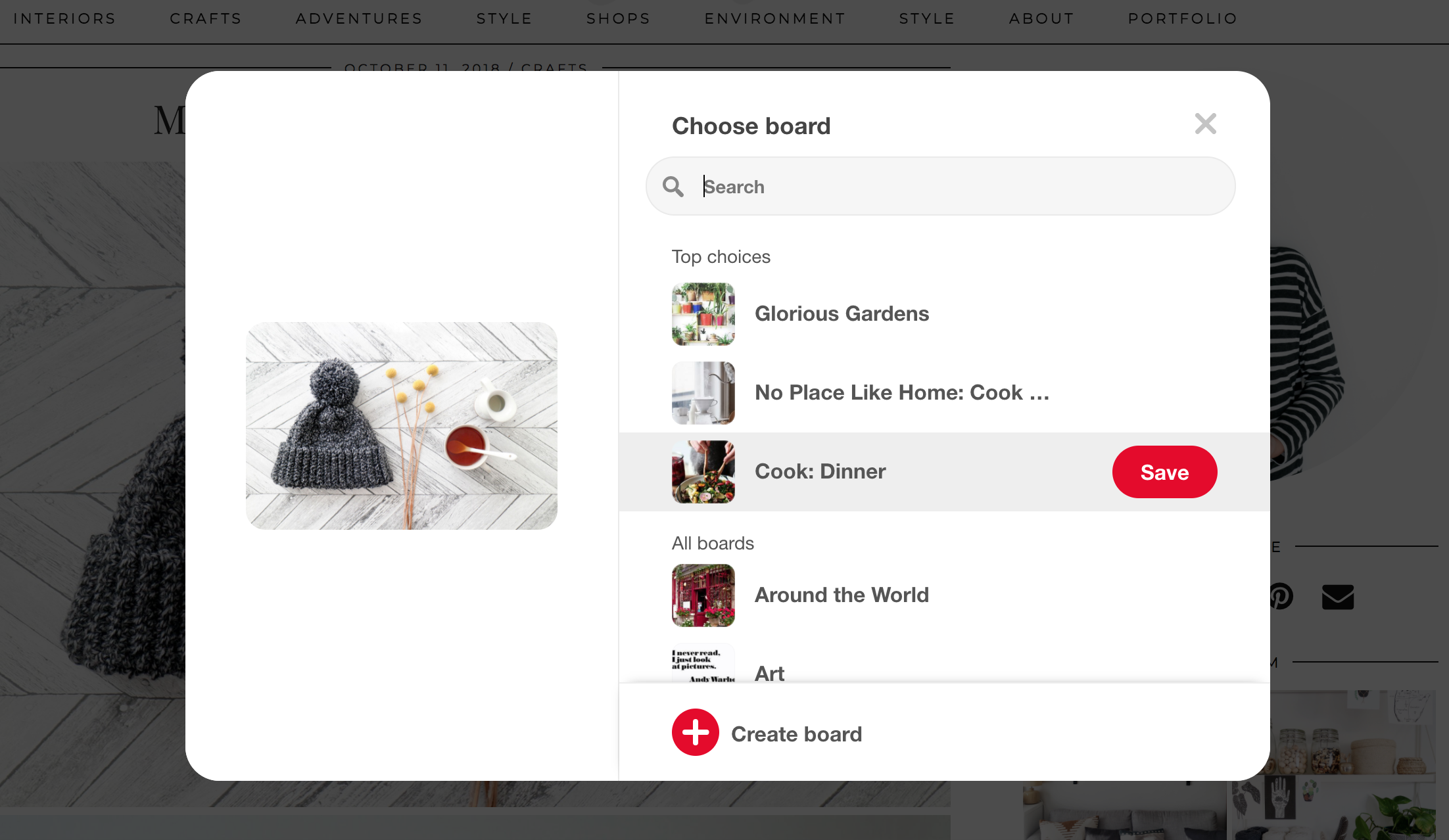
Invest in Great Imagery
Pinterest is basically a huge visual search engine, filled with billions of images. It’s hugely important to make sure yours are the best they can possibly be, so you can avoid sinking into the background. Whether you’re going to be sharing products or blog posts, or a combination of both, it’s worth investing a little time or money into making sure they’re great quality.
You don’t need a fancy camera to take great pictures – most newer smartphones have photography capabilities that can rival a DSLR, but without the added complications. Teach yourself some basic photography skills using YouTube or Skillshare, and then get to grips with some simple editing software. If you’re really not the creative type or you just don’t have the time, hire a professional photographer to create your images for you.
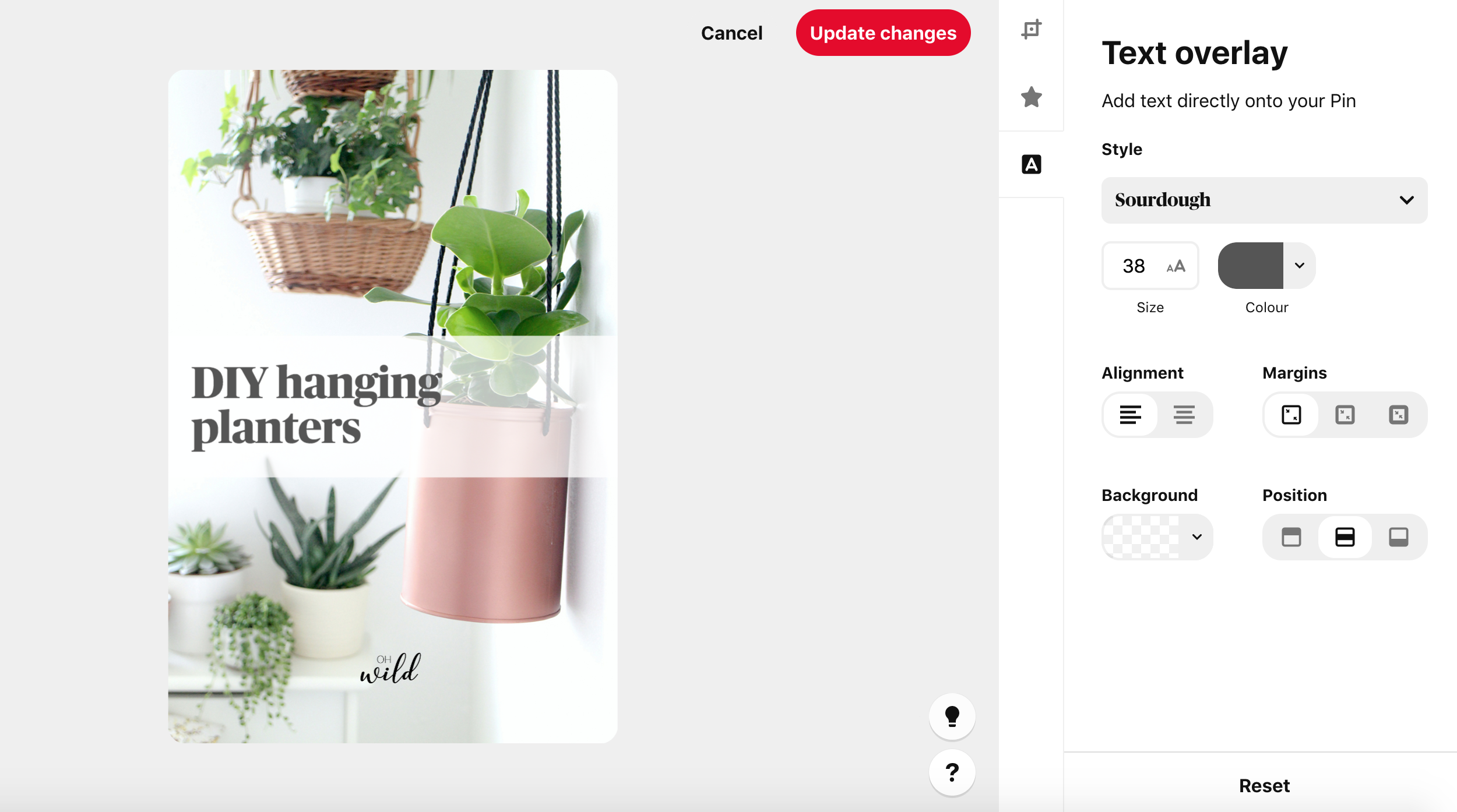
It’s also worth noting that:
- Portrait images using the 2:3 aspect ratio perform best, and look great in peoples feeds.
- The best performing images are reported to be well lit, with little background detail and no human faces.
- You should make sure you add your logo to each image – but keep it subtle.
- Pinterest has a great overlay feature, which makes it easy to add text to your images. Adding in a brief description allows you to tell the user what your pin is about, and encourages them to click through to see the rest of the content. They work particularly well if you include a call-to-action.
Write Great Captions
When you’ve got great images, you’re going to need some fantastic captions or descriptions to go with them. Giving the user plenty of detail about the content of your pin is a great place to start, but there’s more to it than simply being descriptive.
Add some keywords into the first sentence of your caption. This will help your pin to appear in search engine results. Keep it natural, and don’t stuff them in. You also need to make sure they match up with the keywords on the page your pin is linking to.
Include a call-to-action – research by the folk at Pinterest showed a 70% increase in email signups when brands added clear instructions to their copy. If your pin features a product, adding a price in your caption is essential.
Utilise the hashtag feature. Like Instagram, Pinterest uses hashtags to group pins together. It’s worth researching which ones to use before you add them in, and make sure you don’t use more than 20 per pin.
Apply for Rich Pins
Rich pins are SEO gold, vital if you’re using Pinterest to build your business. They use code to pull metadata from your website which automatically adds the information to the pin as you make it. If you’re a business, you really can’t afford to not be utilising the rich pin feature – they make your pins stand out from the crowd, feature your branding and logo and are automatically updated as you update your website.
There are four types of rich pin:
- Product pins make shopping a breeze; they include information on pricing, availability and where to buy your products. Pinterest has reported that 84% of users head to the site when trying to make shopping decisions, so using rich pins to capture potential customers is a great idea.
- Recipe pins automatically include ingredients and timings along with beautiful imagery.
- Article pins are great for anyone with writing business or portfolio. They include an image, a headline, the name of the author and a brief description of the piece, along with a direct link.
- App pins are currently only available on iOS. They allow users to install new apps directly from Pinterest, rather than having to head elsewhere.
Build a Community
Similar to with the other social networking sites, community management should be a key part of your Pinterest marketing plan. Interacting with other users regularly is the best way to promote your content and increase your brand awareness.
Make sure you’re regularly following, liking and commenting on other peoples pins, in the same way you’d leave comments on Instagram. Try and follow other people in your industry or area and think about working together. Teaming up with them automatically increases your audience size and opens you up to potential new customers.
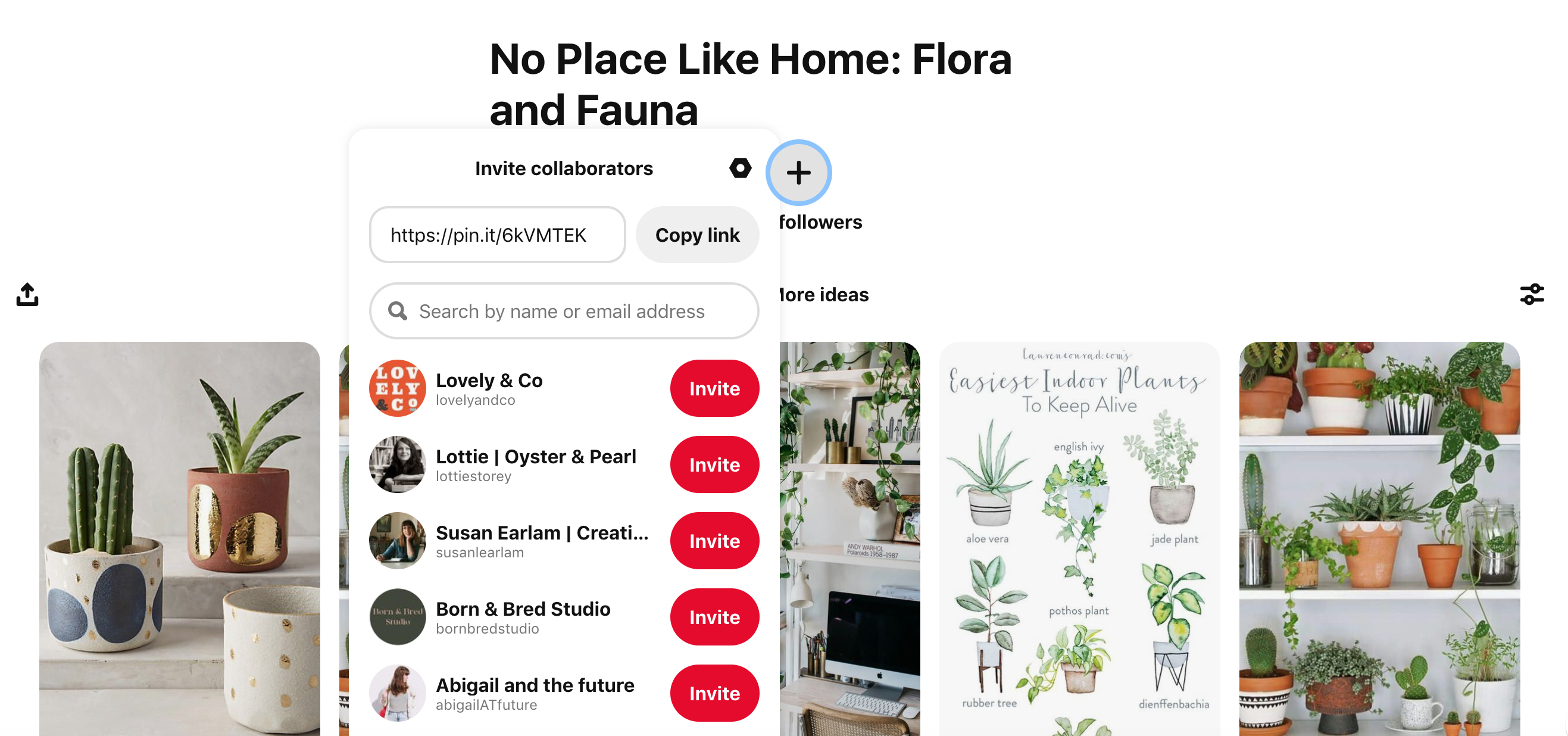
Make the most of the group boards feature, both by getting involved in other peoples collaborative boards, and inviting people to pin to yours. Group boards are the same as standard boards, except multiple users can pin content to them – great for getting your content in front of a larger audience. It’s also a nice way to connect with other users!
Plan your Content
If you want your content to do well on social media, you need to plan it well. You need to be posting and re-pinning regularly to make sure you’re appearing in other peoples feeds – it’s recommended to pin for a short amount of time every day, rather than for longer periods once a week. That might sound daunting, but between 5 and 10 pins per session is enough. The ‘related pins’ section that appears under each pin is a great place to get your content – Pinterest prioritises fresh content of 7 days or less in this area, which is another reason to pin daily.
If you don’t have time to pin daily, try scheduling your content in advance. There are plenty of great scheduling tools and software that make it easy to pin in bulk, and then have your content sent at a time of your choice. Pinterest itself has its own scheduling tool which allows you to build a pin, then select a date and time for it to be posted. You can find everything you’ve scheduled under the ‘pins’ tab on your profile page.
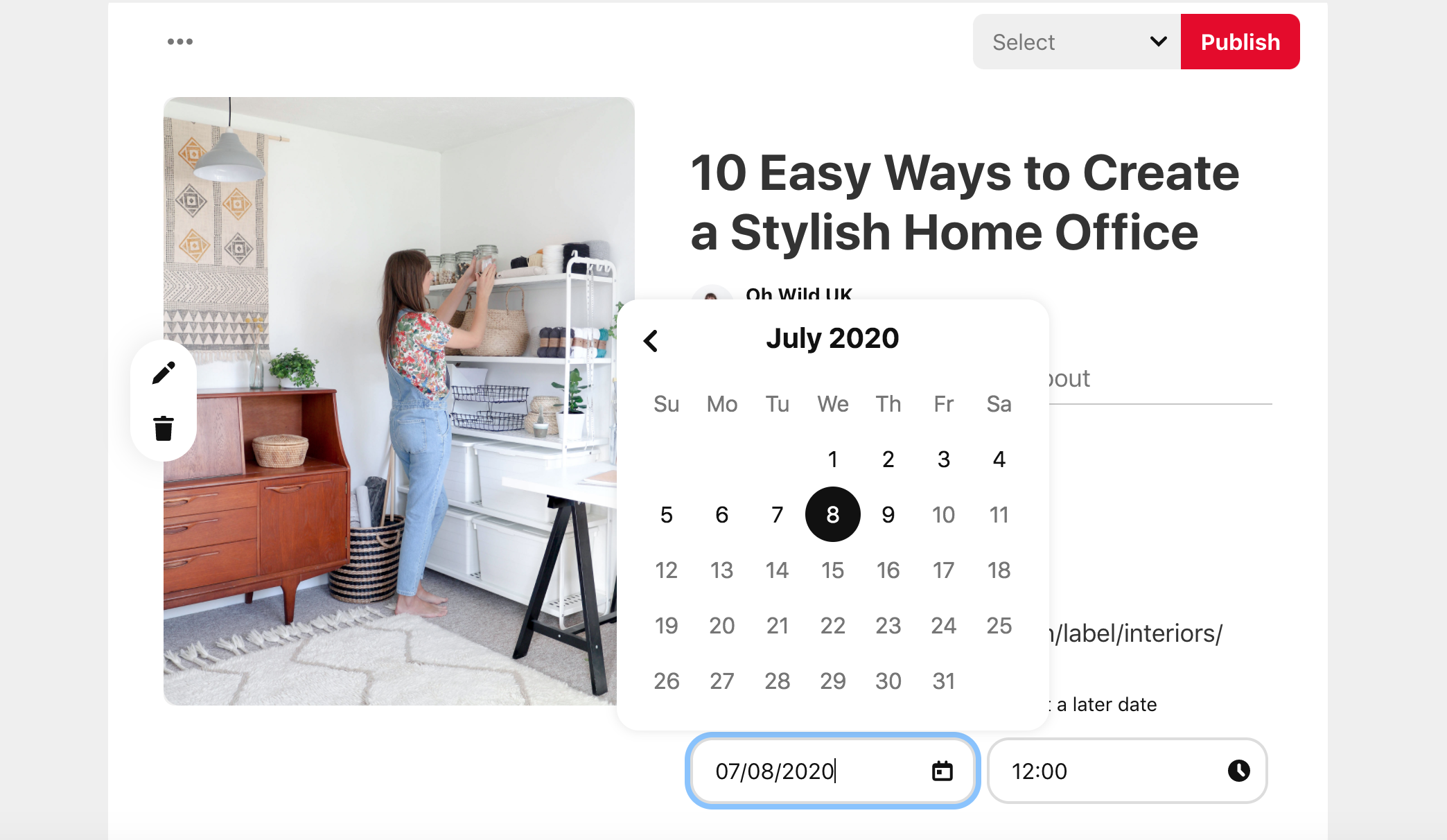
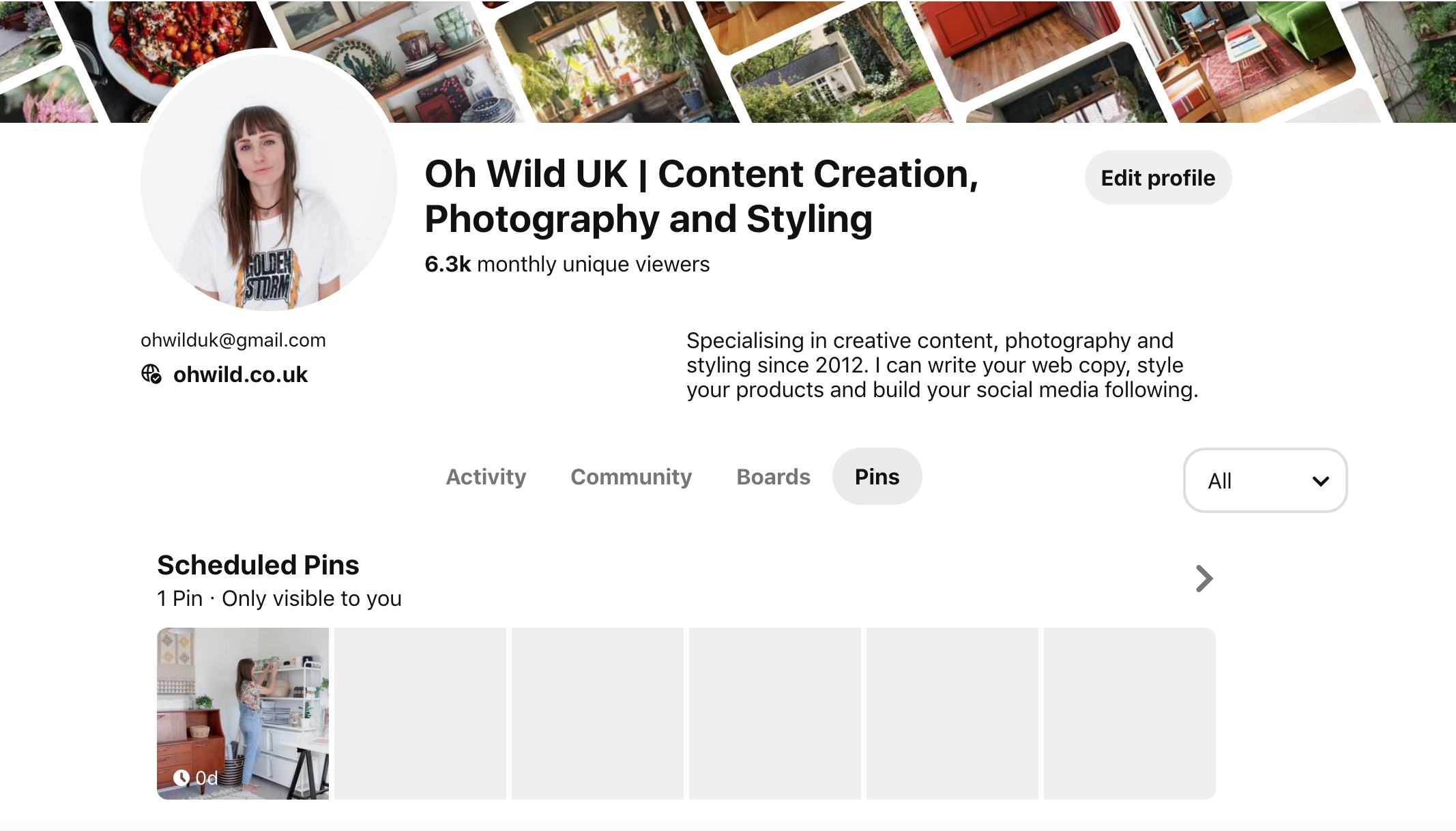
Use Promoted Pins
Promoted pins are the Pinterest version of advertising. If you’re using Pinterest to build your business, trying out paid advertising is a great way to get your content placed in front of a wider audience.
You can choose to either promote a single pin, or create a campaign based around your business goals. Promoting a single pin is far quicker, but setting up a campaign gives you more freedom in that you can select your business goal, target audience and how the advertising is delivered.
Once you’ve set your pin or campaign, you can monitor how it performs in the ads manager section, and if necessary, make adjustments.
